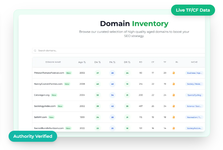Global home automation demand is anticipated to be valued at US$ 47.23 Bn in 2022, exhibiting growth at 12.26% CAGR during the forecast period (2022-2032). The overall demand in the home automation market is projected to surpass US$ 129.76 Bn by the end of 2032.
Growth in the market is underpinned by growing penetration of digitization to improve the lifestyle and increasing usage of home automation devices equipped with newer technology such as voice control, artificial intelligence (AI), and internet of things (IoT).
Besides this, increasing demand for energy-efficient solutions and robust growth in IoT market will further fuel the sales of luxury home automation systems. This is anticipated to create conducive environment for the growth in the home automation market.
With improved standard of living, need for security from theft has increased among the consumers. To capitalize on this trend, home automation system manufacturers are increasing the production of automated anti-theft devices such as wireless sensors for unauthorized access.
Request a Sample of this Report @
https://www.futuremarketinsights.com/reports/sample/rep-gb-766
Which are Some Prominent Drivers Spearheading Home Automation Market Growth?
Growing usage of smartphones has increased the demand for devices compatible with android and apple devices. As these devices are convenient and easy to use, demand for luxury home automation systems have burgeoned among millennials and baby boomers.
Additionally, with advancements in IoT and AI technology, any devices can be connected to the internet or via bluetooth. Convenience of such devices have made it easy for Gen-Z’s and baby boomers to operate.
Consequently, advent of AI devices such as Google Home, Alexa, and Siri have increased the demand for luxury home automation systems such as smart bulbs and others. For instance, a smart bulb can be turned on and off with the assistance of a smart phone or an app.
Further, adoption of these devices reduces the consumption of energy, making them cost-effective. Hence, increasing need for energy-efficient devices is projected to propel the demand in the home automation market.
As per Future Market Insights, the demand for home automation systems nearly doubled during the FQ-20 with the onset of the novel COVID-19. Need for smart devices to cut down the electricity and increasing adoption of automated entertainment smart devices propelled the sales in 2021.
What are the Challenges Faced by the Home Automation Industry?
Integration of advanced technology such as machine learning, AI and IoT improved the efficiency and convenience of home automation systems. However, automation products and appliances are expensive.
Hence, the sales of these devices are likely to be hampered across low- and middle-income economies. Owing to this high cost, the sales in the home automation market are anticipated to be dampened among consumers with limited disposable incomes.
Get More Information on this Report @
https://www.futuremarketinsights.com/reports/home-automation-market
Why is North America Considered to be the Most Lucrative Home Automation Market?
North America is anticipated to be the largest market for home automation systems over the forecast period, opines Future Market Insights. As per the study, the U.S. is expected to spearhead the growth in North America home automation market.
Adoption of smart entertainment devices and growing home ownership in the U.S. will propel the sales in North America home automation market. For instance, as per the survey by Voicebot.ai, in April 2021, around 90 million users adopted smart speakers in the U.S.
Will Asia Pacific Emerge as a Leading Home Automation Market?
According to Future Market Insights, Asia Pacific is expected to provide immense growth opportunities for home automation, with India projected to vanguard the sales in Asia Pacific. As per Future Market Insights, India home automation market is poised to reach a valuation of nearly US$ 14 Bn by the end of 2022.
Rapid urbanization and penetration of social media platforms is propelling the adoption of home automation devices in the country. Growing usage of smartphones among the millennials and rising home ownership is projected to surge the adoption of luxury home automation systems.
Also, increasing adoption of automated smart entertainment devices among millennials will fuel the growth in Asia Pacific home automation market. With favorable government policies and advent of AI and IoT, adoption of audio and video entertainment systems and smart lighting systems has surged.
On the back of this, key players are eyeing the Asia Pacific regions to expand their customer base and increase their revenue over the forecast period.
Market Competition
Some of the key market players in home automation market profiled by FMI include AMX, ADT Pulse, Control4 Corporation, Crestron, Vera, HomeSeer, SmartThings, Frontpoint, Savant, Siemens AG, Johnson Controls, Honeywell among others.
With increasing penetration of e-commerce platforms, key players operating in the home automation market are collaborating with e-commerce giants and online distributors to generate remunerative revenues.
Meanwhile, some of the key players are developing advanced smart products to woo the consumers integrating AI and IoT in entertainment devices.
Request Methodology @
https://www.futuremarketinsights.com/request-report-methodology/rep-gb-766
Key Segments Profiled in the Home Automation Industry Survey
Product Type:
- Luxury home Automation System
- Mainstream Home Automation System
- Managed Home Automation System
- DIY (Do It Yourself Home Automation System)
Application:
- Safety and Security
- Lighting
- Entertainment (Audio and Video)
- Heating, Ventilation and Air conditioning
- Others
Networking Technology:
- Wired Home Automation System
- Wireless Home Automation System
- Computing Network Home Automation System
- Others
Region:
- North America
- South America
- Western Europe
- Eastern Europe
- Asia Pacific
- Japan
- Middle East & Africa
Explore Other Related Reports Links From Technology Market
App Analytics Market Share – The global app analytics market size was valued at $1,950.4 billion in 2021 and is projected to reach $12,901.5 million by 2032, registering a CAGR of 19.1% from 2022 to 2032.
Deep Learning Market Trends – Global deep learning demand is anticipated to be valued at US$ 12,569.0 Million in 2022, forecast to grow at a CAGR of 26.4% to be valued at US$ 130,667.0 Million from 2022 to 2032.
Clinical Data Analytics Market Demand – The clinical data analytics market revenue totaled US$ 12.3 Bn in 2021 and it is expected to reach US$ 15.1 Bn in 2022. Furthermore, with rising adoption in healthcare industry, the overall demand for clinical data analytics is projected to grow at a staggering CAGR of 25.7% between 2022 and 2032
About Us
Future Market Insights (ESOMAR certified market research organization and a member of Greater New York Chamber of Commerce) provides in-depth insights into governing factors elevating the demand in the market. It discloses opportunities that will favor the market growth in various segments on the basis of Source, Application, Sales Channel and End Use over the next 10-years.
Contact Us:
Future Market Insights,
Unit No: 1602-006,
Jumeirah Bay 2,
Plot No: JLT-PH2-X2A,
Jumeirah Lakes Towers,
Dubai,
United Arab Emirates
For Sales Enquiries: [email protected]
Browse All Reports: https://www.futuremarketinsights.com/reports
LinkedIn| Twitter| Blogs
The post Home Automation Market is Anticipated to be Valued at US$ 129.76 Bn by the end of 2032 | Report by FMI appeared first on Future Market Insights.






